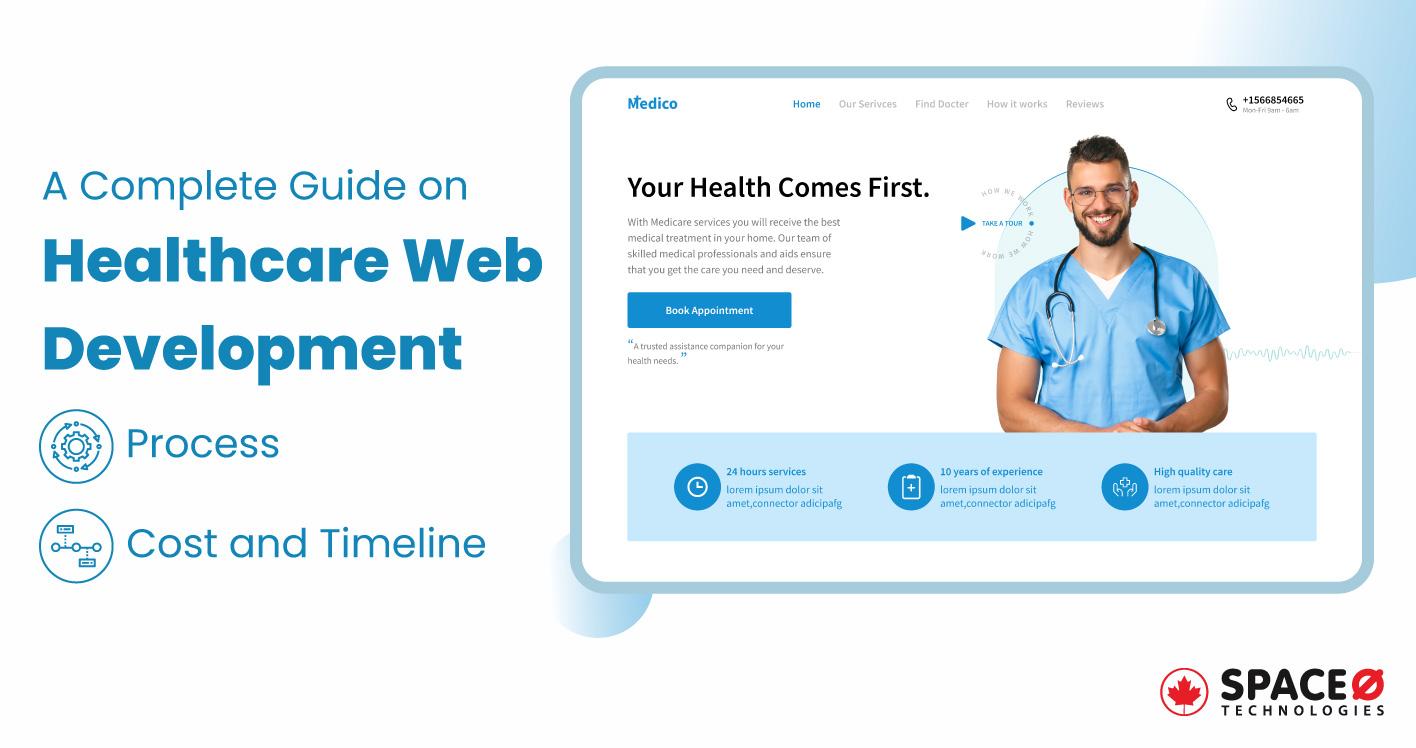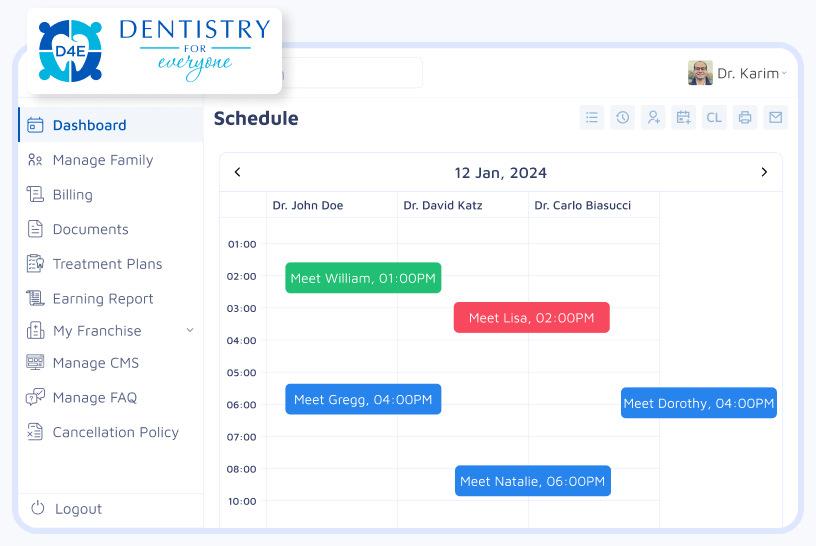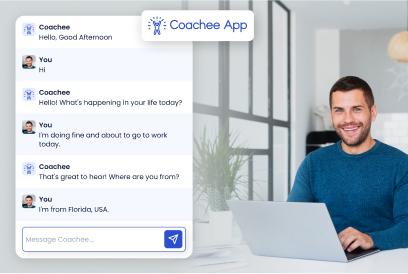
The Ultimate Healthcare Web Development Guide in 2025
If you are a healthcare professional or tech entrepreneur looking to improve and streamline the operations of hospitals or medical organizations, the very first thought you would have is digital transformation.
As 58% of Canadians prefer to book appointments online via electronic mediums, there is no doubt that developing a healthcare web app or website would be beneficial.
In this blog post, you will learn everything about healthcare web development which includes the development process, cost, timeline, and challenges.
Let’s get started.
Table of Contents
Before jumping onto the development process of the healthcare web app or website, let’s first learn about the different types of healthcare solutions.
9 Types of Healthcare Web Solutions
Here are 9 types of healthcare web solutions that can be developed according to the requirements of your organization.
| Name of Healthcare Solution | Description | Features List |
|---|---|---|
| Electronic Healthcare Record (EHR) System | A digital patient data collection system. An EHR system stores all the necessary information about a patient’s medical history. This information includes the patient’s personal information, medical history, and doctor’s recommendation. |
|
| Telemedicine Platform | A web-based software that allows doctors online consultations with patients. With the help of online consultation, doctors can easily perform remote healthcare diagnosis, and treatment, and monitor patients without the need of visiting the hospital physically. |
|
| Patient Portal | A secure online web platform that allows patients to access their personal health information, communicate with healthcare professionals and manage their healthcare requirements online from anywhere in the world. |
|
| E-prescribing System | An e-prescribing system is an electronic system enabling healthcare professionals to create and send prescriptions to pharmacies electronically. Moreover, e-prescribing systems are integrated with EHR systems. |
|
| Medical Image Analysis Solution | Medical image analysis is software that analyzes medical images of patients, such as X-rays, CT scans, MRI scans, and ultrasound images. This system helps healthcare professionals to diagnose patients in a better way in various medical conditions. |
|
| Medical Diagnosis Software | A web or software application that uses the power of algorithms for data analysis to assist doctors and nurses in diagnosing all types of medical conditions. This type of system analyzes the data like patient healthcare history, symptoms, laboratory test results, and other relevant information. |
|
| Remote Patient Monitoring Software | A RPM application is a healthcare technology that allows doctors or nurses to provide remote monitoring and track a patient’s health status outside of a traditional healthcare setting. |
|
| Healthcare Billing System | A healthcare billing system that manages the billing and payment processes of a healthcare organization. This system streamlines the whole process of managing the revenue of a healthcare organization. |
|
| Healthcare Tracking Web App | Healthcare tracking apps enable individuals to track their health properly. This type of application is connected to wireless devices like fitness watches, trackers, and health bands. |
|
Next, learn about the development process of healthcare or medical web apps. As a leading web development company in Canada, we know the complete process of development. By following this process, you would be able to develop a powerful healthcare solution for your organization.
How to Create a Healthcare Web Portal in 5 Steps
Follow these 5 steps to create your healthcare web app or website.
Requirement Gathering and Planning of Your Healthcare Web Solution
Before your healthcare web development, you must be clear with your requirements. You should know which problems you want to solve with your healthcare application.So, first, define the main problems you want to solve with your healthcare website development or web app development.For example, your goal in developing a healthcare web platform is to provide remote healthcare access to underserved populations.Depending on your problems, the team of healthcare web developers would provide you with a solution.
At this stage, you need to outsource your web development project to an experienced web portal development company like Space-O, and the company’s business analysts team collect your requirements, define the scope, make a plan of functionalities to include, and provide your approximate costs of development.
To properly develop your healthcare solution, it is important to understand your requirements and the core functioning of your healthcare organization. Moreover, performing research in the market helps to know the pain points and your healthcare solution is developed to overcome the core pain points that your healthcare organization is facing.
Deciding the Features Include in Your Healthcare Website or Web App
The functionalities and features of your healthcare application decide its success. Carefully choosing the right features for your healthcare web application is important. To help you, here is a table that includes core features to integrate into your healthcare web or website for end-users.
Features of Healthcare Web Application for the End-users - User registration and authentication
- Electronic Health Records (EHR) access
- Appointment scheduling and reminders
- Telemedicine capabilities
- Medication management
- Billing and payment processing
- Secure messaging and chat
- Health education and resources
- Integration with wearables
- Language Translation
- Social login options
- Online forums and support groups
- Referral management
- Feedback and review system
- Personalized health dashboard
- Health tracking and monitoring tools
- Symptom checker and triage tools
- Reminders for preventive care and screenings
- Online access to test results and diagnostic imaging
- Payment options
- Search and filters
Now, let’s check the features of a healthcare web application for healthcare professionals.
Features of Healthcare Web Application for Healthcare Professionals - Electronic Health Records (EHR) integration
- Patient data management
- Medication management
- Appointment scheduling and management
- Referral management
- Secure messaging and chat
- Patient tracking and monitoring
- Analytics and reporting tools
- Integration with medical devices and wearables
- Decision support tools for disease management
- Clinical trial recruitment and management
- Clinical decision support tools
- Electronic prescribing
- Clinical documentation and note-taking tools
- Telemedicine capabilities
- Integration with billing and payment processing
- Health education and resources for patients
- Collaborative care coordination tools
- Integration with prescription drug monitoring programs (PDMPs)
- Disease management and treatment guidelines
Next, the process of wireframe will get started.
Create a Wireframe and Prototype of Your Healthcare Web Application
Before designing your healthcare web app, it is important to create a wireframe. Creating wireframes helps you to know what your healthcare web app looks like. A wireframe is a visual representation of your healthcare web application with the exact layout and functionality of your web application. However, it doesn’t include any elements like colours, images, and fonts.
When your healthcare website or web app gets ready, you need to review it against your requirements. If any changes are required to your web application, the UI/UX design team works to modify the wireframe upon your requirements. Once the wireframe gets ready, the UI/UX team prepares a prototype as per your healthcare web app wireframe.
An early version of your healthcare web app is created to test its functionality and design. The purpose of designing a prototype of any web or mobile application is to get feedback and get the improvement done accordingly. So, when your final version of the healthcare web application is user-friendly, according to your requirements, and helps you to achieve your end goals.
Developing HIPPA-compliant Custom Healthcare Web App Solution
Web app developers first set up the environment for your medical web software. According to the technology stack present in the SRS document, the developers write code for your healthcare web application.
At this stage, the web developers code functionalities and features of your healthcare web application. During the development, web developers ensure compliance with different standards, such as HIPAA, GDPR, NIST, PIPEDA, and CCPA. This way, you ensure that your healthcare website or web application is secure for your patients.
Testing and Deployment of Your Healthcare Web Application
The QA team performs the testing of your healthcare web application. By following the software testing life cycle, the testers ensure your healthcare doesn’t have any bugs left before deployment. Different types of testing on your healthcare websites are as follows:
- Unit testing
- Performance testing
- Functional testing
- Usability testing
- Security testing
- Integration testing
When the testing is performed and your web application is bug-free, the healthcare web application is deployed on the servers as per your requirements.
First of all, the server on which your web application is set up. After that, the environment of deployment is set up, and further, the build of your web application is created.
This process includes steps for deploying your healthcare web app which are as follows:
- Compiling source code
- Bundling assets
- Running scripts of code
At last, user acceptance testing is done to ensure your healthcare website is working fine. As your healthcare web application is bug-free, then it is launched to the public for usage.
Moving further, let’s learn about the important compliance you need to follow.
Looking to Hire Healthcare Web Developers?
We are a leading web development company in Canada, having experience in successfully deploying 300+ custom software and web solutions worldwide.

As a leading healthcare software development company, we have skilled and talented software engineers who work closely with you to bring your idea to life.
Recent Web Apps Developed by Us
Follow These 4 Compliance for Healthcare Web Apps and Websites Development
Space-O, being a leading healthcare website design company, follows all the security and privacy compliance when developing a healthcare website or web application for your hospital or organization. It is important to ensure the security and privacy of your patients when you are dealing with healthcare mobile apps, web applications, and websites.
GDPR
The General Data Protection Regulation (GDPR) is a regulation based in Europe that protects the personal and private data of EU citizens. When you are developing a healthcare web application for the citizens of Europe, then your application must comply with the GDPR regulations.
HIPAA
HIPAA is referred to as the Health Insurance Portability and Accountability Act (HIPAA). This regulation is also known as healthcare security compliance regulation worldwide. Every healthcare professional needs to protect sensitive patient data and maintain the privacy and security of the information available on electronic protected health information.
PHIPA
PHIPA, referred to as the Personal Health Information Protection Act, is a privacy law in Ontario, Canada. This privacy law is created to protect the privacy and confidentiality of an individual’s personal health information, which is collected, stored, and disclosed by healthcare providers purposefully. If you are specifically creating a healthcare web application, you need to ensure compliance with the law of PHIPA.
PIPEDA
A federal privacy law in Canada that sets out rules for the collection, use, and disclosure of personal information by the private sector organizations functioning in Canada. PIPEDA refers to the Personal Information Protection and Electronic Documents Act. This is an important federal privacy law under which healthcare professionals, providers, or companies develop healthcare web applications. In addition, healthcare professionals need to protect their personal information from unauthorized access, use, or disclosure.
Now, you might wonder about the development cost of healthcare web applications. Check the next section.
How Much Does It Cost to Develop a Healthcare Web App?
The average cost to develop a healthcare web application ranges from $50,000 to $75,000. The cost of a healthcare web application depends on several factors which are as follows.
- The complexity of your healthcare web application
- The technology stack used to develop the web application
- Features and functionalities to integrate into your healthcare web app
- The cost of compliance with the different privacy laws and regulators
- The location of the web application development team you hire
- The level of customization you want into your web application
However, use this formula to calculate the cost of your medical website development. Here is the formula to use.
If you want to get the exact cost of your healthcare web development, contact Space-O. Our technical consultants will provide you with a complete roadmap, timeline, and cost of your custom healthcare web development.
Want to Know the Exact Cost Estimate of a Healthcare Web App?
Talk to us. Describe your healthcare solution requirements to us. Our consultants will provide you with a complete roadmap for project development.
In the next section, let’s learn about the timeline to develop a healthcare website or web-based medical software for your healthcare business.
How Long Does It Take to Develop a Healthcare Web App?
The average timeline to develop a medical web app ranges from 6 to 12 months.
The timeline to develop healthcare websites or web apps depends on multiple factors. Those factors are as follows:
- The complexity of your medical web development
- The size of the web application development team
- The number of functionalities or features you want to integrate
- The technology stack used to develop your medical web portals
- The experience of the web app development team you hire
- The architecture you choose to develop your healthcare systems
These are the core factors that directly impact the timeline of your healthcare systems. Depending on your healthcare web development, the approximate timeline for development gets decided. For understanding purposes, you can consider the above timeline. However, when developing a healthcare system, the timeline of your application ranges higher or lower from the above given.
Now, let’s understand the challenges faced during the healthcare web development process for healthcare organizations.
4 Challenges Faced During Healthcare Web Development
Here is the list of core challenges that are faced when developing healthcare web applications in the healthcare industry.
Compliance With Healthcare Regulations
When developing medical websites or healthcare web applications, you need to ensure your applications comply with all the necessary healthcare regulations. Some of the important healthcare regulations are HIPAA, PIPEPA, and PHIPA.
But, the problem here is that your healthcare web application needs to design your healthcare web application accordingly. So, if you have a limited timeline, then your development becomes critical and difficult. This leads to the challenge of complying with the healthcare regulations as well as completing the development within the timeline.
Integration With Third-party Systems
To effectively function your healthcare website or web application, you need to integrate with third-party systems. For example, if you have developed your healthcare website for your healthcare organization, then to access your patients you need systems like electronic healthcare record systems or medical billing software systems according to your requirements.
Therefore, to ensure the healthcare websites function properly the testing and deployment are done accordingly. Moreover, the important point is to ensure secure integration, testing APIs and finding reliable APIs and third-party systems are necessary.
Data Management of Your Healthcare Web Application
Whether it’s about healthcare websites or web applications, data plays an important role. Through data, healthcare providers or healthcare professionals can take proper decisions on providing treatment to patients. Moreover, the data present in the application of healthcare organizations is sensitive and private so managing it properly is the sole responsibility.
That’s why when it comes to managing the data of patients, healthcare providers need to ensure that their applications properly comply with privacy and healthcare guidelines. For that, following proper encryption, and data access controls is important.
In addition, data recovery and taking regular backups of healthcare applications should be a must-choice to properly run your healthcare organization. All these processes are complex and time-consuming as well as done with the proper planning of development. So, sometimes due to excessive complexity, the timeline of your healthcare website development increases.
Scalability and Performance of a Healthcare Website
Your healthcare web application should be able to handle large data or volume, even during the peak hours of usage. Mostly, when developing healthcare websites or web applications, scalability and performance are left aside somehow due to the over-complexity of the applications,
So, when the user base of your application increases, the issues of low performance, and irregular interruptions arise. That’s where the scalability of your web application is required. To ensure you don’t face the challenge of scalability and performance, you need to have scalable architecture and deployment of your healthcare application on the web servers should be done by following proper methods.
So, are you ready to develop your healthcare websites or web applications? You might want to know where to look for healthcare website developers. Check the next section.
Where to Look for Healthcare Web Developers?
Whether you are looking to hire medical website developers or healthcare web app developers, you need to visit the following websites. Make sure you choose the right healthcare web developers for your project. Because the right team of developers, designers, and testers leads to the success of your web applications.
Here are the different platforms from where you can hire quality developers at affordable rates.
| Freelance Marketplace Platforms | Finding Software Development Agencies |
|---|---|
|
|
So these are the websites on which you will find the best talents for your healthcare web development. Whereas, if you are busy with the core operations of your healthcare business, you can contact a reputed software development company like Space-O technology.
Do you still have questions regarding healthcare web development? Check the next section of the FAQ.
Looking for a Reliable Web Development Agency?
Talk to us. We have a team of experienced web developers who are skilled in the latest technology of web development.
FAQ About Healthcare Web Development
Which programming languages and frameworks are used for healthcare web development?
Here is the list of the technology stack used to develop a healthcare web application.
- Java
- Python
- Ruby on Rails
- AngularJS
- ReactJS
How to find the right web development company for your healthcare web application
Here are the points that you need to follow when you are choosing a web development company.
- Look for companies or developers who have relevant experience
- Check if the company has industry-specific knowledge
- Consider the outsourcing option to choose the right developers’ company
- Check if the communication is good to discuss requirements properly
What are the benefits of developing a healthcare web solution for your healthcare business?
Here are the core benefits you get by developing a healthcare web application.
- Enhance your patient care
- Increase efficiency of your healthcare organization
- Get better data management of your healthcare organization
- Save costs of your healthcare organization by eliminating repetitive tasks
Ready to Develop Custom Healthcare Web Solution?
In this blog, you have learned about the complete process, cost, and timeline of healthcare web development. Developing customized healthcare web solutions surely benefits your healthcare organization. No doubt the process of developing a healthcare web solution is not easy as it involves knowing the exact requirements, design, development, and compliance.
However, choosing the right development team for your healthcare web development helps you to achieve your goals of improving your healthcare organization. If you are looking to hire healthcare web developers, get in touch with us. Let’s talk about your requirements.
Editor's Choice

Top 10 Website Development Companies in Canada in 2025

Website Development Cost: A Complete Guide for Canadian Businesses

How to Build a Website for a Small Business? A Step-by-Step Guide
All our projects are secured by NDA
100% Secure. Zero Spam
*All your data will remain strictly confidential.
Trusted by


Bashar Anabtawi
Canada
“I was mostly happy with the high level of experience and professionalism of the various teams that worked on my project. Not only they clearly understood my exact technical requirements but even suggested better ways in doing them. The Communication tools that were used were excellent and easy. And finally and most importantly, the interaction, follow up and support from the top management was great. Space-O not delivered a high quality product but exceeded my expectations! I would definitely hire them again for future jobs!”

Canada Office
2 County Court Blvd., Suite 400,
Brampton, Ontario L6W 3W8
Phone: +1 (437) 488-7337
Email: sales@spaceo.ca






